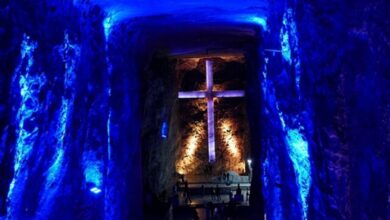Two weeks of strike in Colombia have already been completed, what are the protesters asking for?

We tell you the reasons why Colombians continue to demonstrate in the streets. Photo: AS
LatinAmerican Post | Staff
Listen to this article
Leer en español: Colombia: ¿por qué no ha habido consenso con las exigencias del paro?
Different sectors have been unemployed in Colombia since Wednesday, April 28. The protests began against the tax reform that the government of Iván Duque would have passed to the Congress of the Republic. The aforementioned reform harshly punished the middle class, as it proposed to tax funeral services, pensions and some basic necessities and the family basket. After a few days of unemployment, the president withdrew the reform and the Minister of Finance, Alberto Carrasquilla, resigned from his post.
However, the protests have not stopped and neither has the police violence. Why do the protesters keep marching? What are the protesters asking for?
Why else do you protest?
As has been the case with other protests in Latin America in recent years, in Colombia the tax reform was only the tip of the iceberg. So perhaps the withdrawal of the reform was the first requirement of those who came out to demonstrate, but really the diagnosis is a general discontent in the face of the government of Iván Duque .
In the framework of the protest, conversations, artistic and musical demonstrations take place, the walls of the streets of the cities are painted and harangues are shouted. These expressions of popular clamor show that discontent goes beyond reform. They are also ways of inhabiting public space and it happens that after several days of protests and conversations by people in the streets and highways of the country, the demands change.
Among the other demands of unemployment can be counted:
- Withdrawal of the health reform being prepared by the Government
- Suspend forced eradication with glyphosate spraying
- Basic income
- Free education and no educational alternation
Finally, there is perhaps a request that is felt in the streets more than any other: that the Government recognize that there has been excessive use of force by the police and the ESMAD (Mobile Anti-Riot Squad). Since the start of the strike, the figures for police violence and human rights violations have been outdated in a matter of hours. According to the NGO Temblores, after two weeks, there are already 39 cases of homicidal violence by the public force. The protesters, then, seem to go out day after day to march to demand their right to protest, to inhabit public space. , which belongs to everyone. The demilitarization of the protest and the cessation of the violation of human rights are, therefore, the most priority demands of the strike.
What's the "great dialogue" about?
After the withdrawal of the tax reform, President Iván Duque has proposed what he calls "the great dialogue." In the first place, he has invited former presidents and representatives of ruling party parties to participate. Now some members of the opposition have also joined. However, the protesters seem not to trust this solution.
After the November 2019 strike in Colombia, President Iván Duque proposed a great dialogue in which he would open a digital platform for the protesters to share their demands. This first dialogue did not change any public policy nor did it achieve the resignation of the defense minister, which was the demand at the time. As a consequence, the sectors that are protesting today do not trust this new solution, so similar to the previous one.
However, this Monday, May 10, the president began the great dialogue , from which a specific proposal has not yet come out, in addition to the announcement of zero enrollment for strata 1, 2 and 3 during the second semester of this year, which some have interpreted as a short-term, populist measure that does not solve the structural problem of public education. Among the points on the Government's agenda for the great dialogue are the following:
- Free Education
- Mass vaccination
- Stabilization of national finances
- Economic reactivation and social development
Why has there been no consensus?
This national strike has, in effect, demonstrated a crisis of representation. Not only does the population not feel represented by the Government or Congress, but the young protesters do not feel represented, not even, by the strike committee. The latter is made up of leaders of some unions and unions, and has already presented a list of petitions; But the truth is that the protesters are not limited to this group. This may also be a cause that the demands for unemployment are not always so clear, since there are already many sectors that have come out to demonstrate : the opposition, the indigenous minga, young people, students, workers, feminists, peasants, transporters, etc.
This is why what Colombia is experiencing today is a social outbreak, as it is the consequence of general discontent and not of a single demand of a few. What does seem to be a consensus among those who demonstrate is the demand for the recognition and prosecution of state violence and the excessive use of force at the door of the police and ESMAD, and this is precisely the point that is conspicuous by its absence among those proposed by the Government for dialogue.





